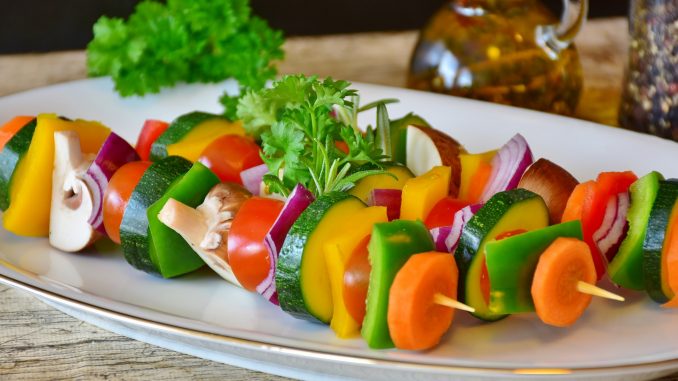
Do you want to contribute to the climate stack? Then the food is easy to start with.
One-third of the household’s climate impact comes from food and most of the emissions come from meat consumption. Fortunately, you can easily reduce the emissions from the food, without having to be complicated or expensive!
What you choose to eat is crucial to the impact of your food on the climate. It is more important than how far the food has been transported. Choosing vegetarian is the easiest and most important thing you can do to eat more climate-friendly.
But there is more you can do to eat environmentally smart:
More vegetarian contributes to a healthier diet. It is also cheaper than the meat or sausage, at least if you choose root vegetables, coarse vegetables, beans, and lentils. Studies show that if you reduce the amount of meat, eat more vegetarian and switch to organic, you can save money.
1. Climate-smart with vegetarian food
Did you know that if you choose a vegetarian right, you reduce the average climate impact of food by more than half? This is because breeding of meat animals accounts for overshadowing of climate emissions. We eat a lot of meat and it is neither environmentally or health sustainable. Over the past 20 years, we have increased the amount of meat we consume a lot.
Beans, lentils, chickpeas and other delicacies from the plant kingdom are climate-smart, although they have been transported far or found in the freezer counter. When choosing fresh vegetables it is also good to choose by season.
2. If you eat meat – choose carefully
If and when you eat meat, be sure to choose meat from animals that have also contributed to environmental benefits. Cows and sheep graze grass, thus food that we humans cannot eat. Admittedly, ruminant animals produce more greenhouse gases than pigs and birds when they digest food. But grazing animals are needed to keep the ground open and to keep important plants and animals. When animals are grazed in pastures, nature becomes rich in species. Unfortunately, not all animals are allowed to graze in valuable fields, so choose organic meat or locally produced beef.
Pigs and chicken are examples of animals that eat almost exclusively what humans can eat, such as cereals, corn, and soy. A large part of the feed is imported to animals, a large part is a hard-sprayed soy. A smarter alternative is to breed pork and chicken on leftover products, thus utilizing a resource that would otherwise be wasted. But even if we choose meat with care, the total meat consumption needs to decrease. We need to eat both less and better meat, in other words!
3. Don’t throw away food!
The food we throw away represents a major and unnecessary environmental impact. Many households produce a lot of food waste.
The waste is partly due to the fact that we shop too much and that the food is getting old in the refrigerator, but also because we throw away food unnecessarily. Trust your senses. Smell and taste the food!
4. Organic production develops agriculture
The rules for agriculture connected to various certifications contain several climate regulations, such as requirements for renewable electricity and economical driving. Eco also sheds artificial fertilizers that require a lot of fossil energy to produce, and research has shown that eco-cultivation increases the amount of decaying plant parts in the soil. This is good because it makes the soil more fertile and at the same time binds carbon dioxide.
But all organic food is not automatically more climate-smart, it depends on what you eat. Most vegetables have a lower climate impact if they are organic, while organic meat has about the same impact as organic. In spite of climate measures in organic farming, it is not possible to change all sources of greenhouse gases, such as the digestion of cows and lambs. So, to reduce the climate impact of food, it is important to eat more vegetarian.
However, the main advantage of organic cultivation is that it leads to more biodiversity, which means that we can better handle future climate change.
Leave a Reply